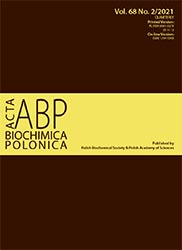LncRNA UCA1 alleviates aberrant hippocampal neurogenesis through regulating miR-375/SFRP1-mediated WNT/β-catenin pathway in kainic acid-induced epilepsy
A new molecular mechanism of UCA1 in epilepsy.
Abstract
Temporal lobe epilepsy (TLE) is a chronic disease of the nervous system, associated with increased proliferation in the hippocampus. Urothcarcinoma associated 1 (UCA1) is a long long non-coding RNA that was shown to regulate proliferation and differentiation of neural progenitors in vitro. We hypothesised that TLE-associated abnormal proliferation is a consequence of the downregulation of UCA1. This hypothesis was tested in mice with kainic acid (KA)-induced seizures, and then the potential mechanism was explored in vitro and in vivo. Result showed that the expression of UCA1 and Secreted Frizzled Related Protein 1 (SFRP1) were significantly reduced in hippocampal tissues of epileptic mice, while miR-375 was increased compared with the control group. Pearson correlation analysis showed that UCA1 was positively correlated with SFRP1, while miR-375 was negatively correlated with UCA1 and SFRP1. Besides, UCA1 was overexpressed in mice and the overexpression of UCA1 significantly reversed the abnormal proliferation of hippocampal neurons in epilepsy mice. In vitro Luciferase assay showed that UCA1 and Sfrp1 are both the targets of miR-375, and UCA1 promotes the expression of Sfrp1 by competitively adsorbing miR-375, thereby inhibiting the activation of the WNT/β-catenin pathway. The inactivation of the WNT/β-catenin pathway prevented the abnormal proliferation of neural progenitors in the epileptic hippocampus. In conclusion, our findings provide a theoretical basis for the clinical application of UCA1.
Acta Biochimica Polonica is an OpenAccess quarterly and publishes four issues a year. All contents are distributed under the Creative Commons Attribution-ShareAlike 4.0 International (CC BY 4.0) license. Everybody may use the content following terms: Attribution — You must give appropriate credit, provide a link to the license, and indicate if changes were made. You may do so in any reasonable manner, but not in any way that suggests the licensor endorses you or your use.
Copyright for all published papers © stays with the authors.
Copyright for the journal: © Polish Biochemical Society.


